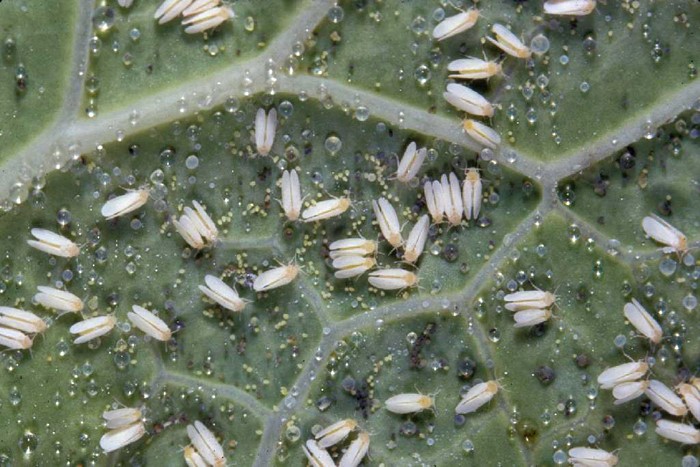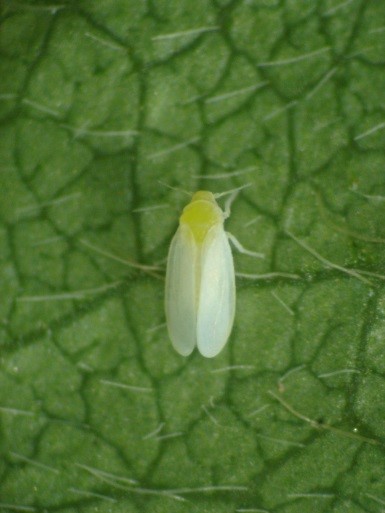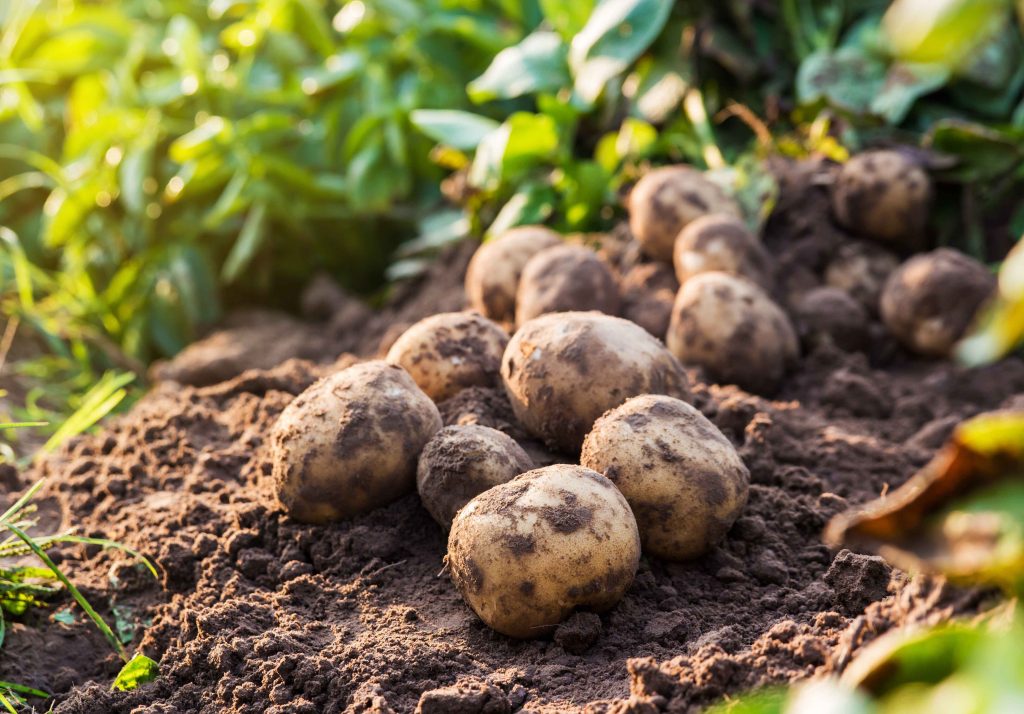
Soil Type: Sandy loam, silt loam and clay loam soil are suitable for potato growth.
Land preparation: The best way to produce a well-pulverized bed is to plough the ground once up to 20–25 cm deep. When you’ve ploughed, repeat harrowing 2-3 times.
Plantation Season:
Autumn Crop
Detail: Mid-September to October
Spring Crop
Detail: February
Summer Crop (Mountainous areas)
Detail: April to May
Layout: Plant-Plant: 20cm Row-Row: 60-75 cm
Irrigation: The first irrigation is to be carried out right away after sowing. Water should not be allowed to flow over the furrows as this will hinder germination. Water ought to fill the furrows by two thirds. There after water should be applied every 7 to 10 days.
Suitable areas: Nowshera, Mardan, Sawabi, Mansehra, Abottabad, Swat.
Varieties:
Potato Red Varieties: Portorka, Supaid Gulabi, Desi surkh, SH 2000
Potato White Varieties · Faisalabad-White · Dyamint · PRI-Red · SH-5 · Faisalabad-Red · Cardinal · Desiree (Early maturity) · Sarpomaira Kaghan.
Fertilizer: N = 100 kg P = 50 kg K = 50 kg zinc sulphate (21%) =10 kg
Harvesting Time: Potato complete life cycle in 90-120 days
Production: 7-9 ton per acre
Diseases
Late blight of potato: Phytopthora infestans
Identification: It affects tubers, leaves, and stems. Water-soaked patches start to develop on leaves, grow in size, turn purple-brown, and then turn black. On the underside of the leaves, a white growth appears. This affects the stems, rachis, and petioles. It often manifests at nodes.
Management
Cultural Control
By removing volunteer potatoes and cull piles, practising proper harvesting and storing techniques, and using fungicides as required, late blight can be managed. It’s crucial to have air drainage to let the foliage dry each day.
Chemical Control: Chlorothalonil and Mancozeb
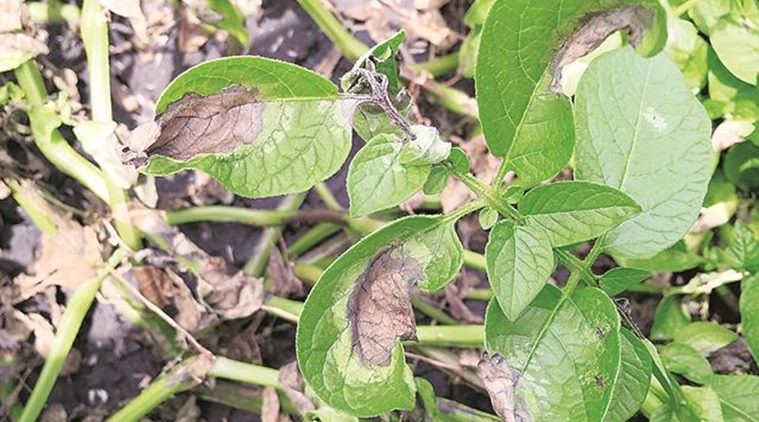
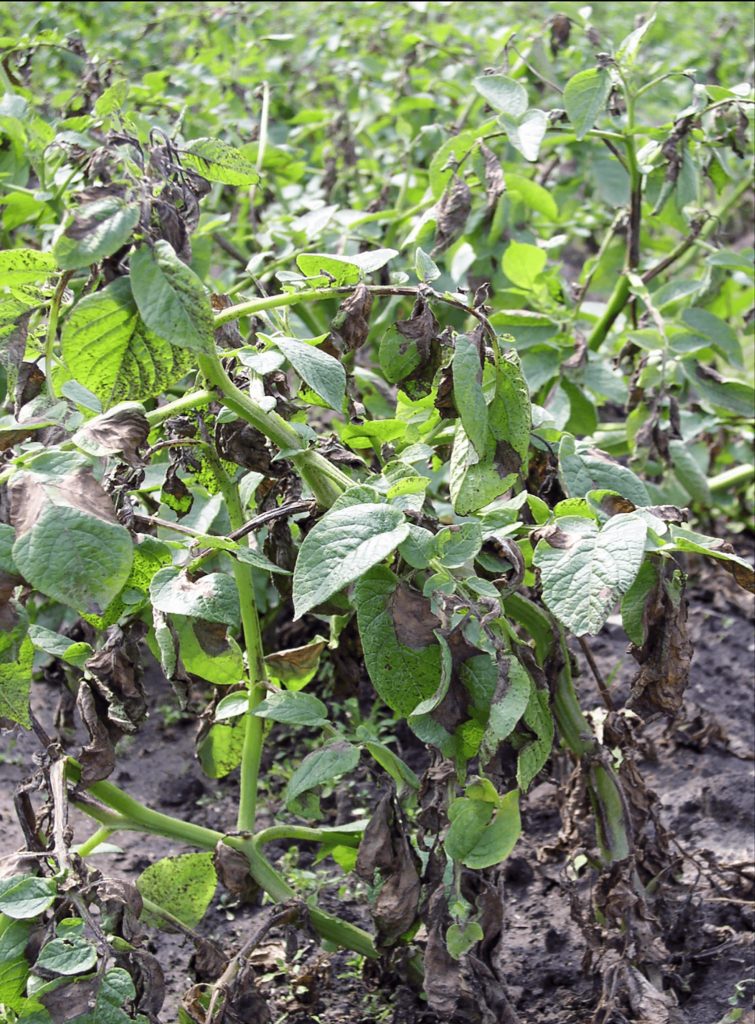
Early blight: Alternaria solani
Identification: It can be found in both plains and hills. Angular, oval, brownish-black necrotic patch with concentric rings in a ring pattern. Many blotches form and disperse all across the leaf. Fruits with bullet holes.
Management
Cultural Control
Use only seed tubers that are free of diseases while sowing. Debris from diseased plants should be removed and destroyed because soil-borne spores are the main cause of infection.
Chemical Control
Chlorothalonil and Mancozeb
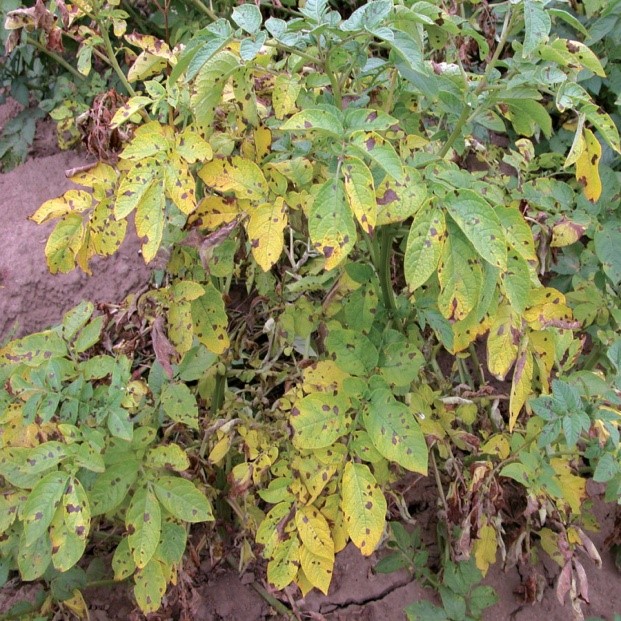
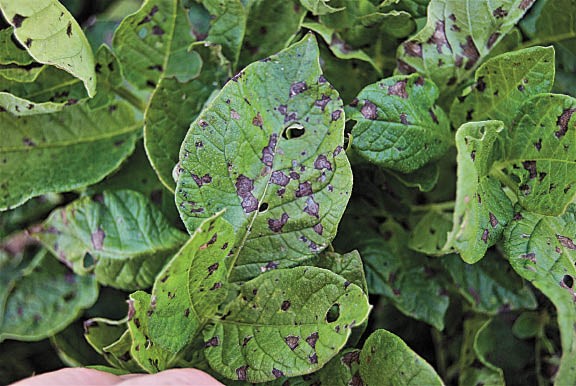
Common scab or corky scab – Streptomyces scabies
Identification: The symptoms include corkiness of the tuber periderm. Rusty spots can be seen 1/4 inch into the surface of the tuber. The diseased tuber has a few small pits. On the infected tuber, a light brown to dark brown lesion forms. Infected tissue will draw bugs.
Management
Cultural Control
Planting only scab-free seed potatoes will help to prevent the spread of the virus and inoculum to the following crop.
Chemical Control
Thiophanate methyl, Sulphur
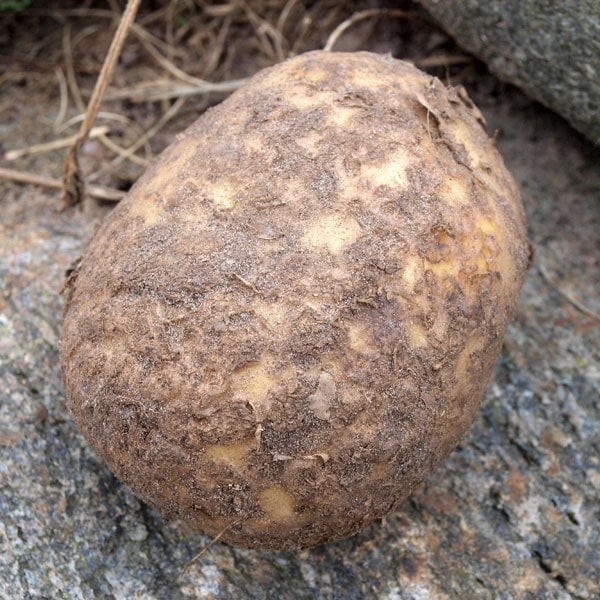
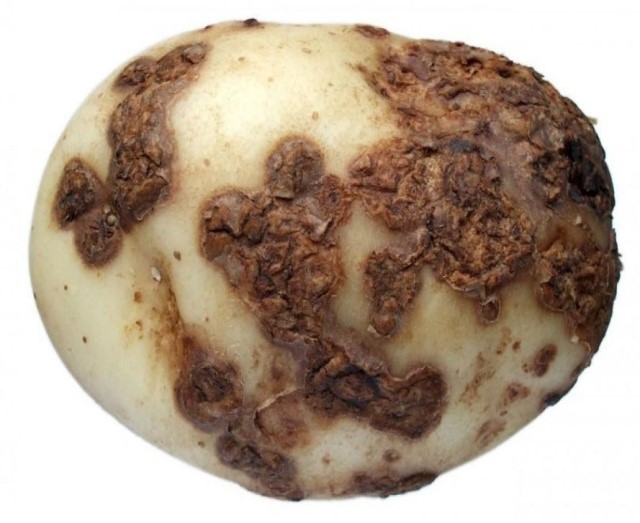
Blackleg (Soft rot) Erwinia carotovora
Identification: Small, water-soaked lesions at the base of stems that develop from seed pieces may grow to be large, extended lesions that extend from the base of the stem to the canopy. Tissue becomes soft and water-soaked and can range in colour from light brown to inky black. Wilted, curled leaves develop small, water-soaked lesions that have a soft, slimy texture when wet.
Management
Cultural Control
Plant tissue culture-produced seed pieces; clean tools and equipment before cutting seed pieces to minimise bacterial contamination; harvest tubers without injuring them; By giving leaves adequate time to dry out throughout the day after watering, you can cut down on the time that leaves are moist.
Chemical Control
FLUDIOXONIL and MANCOZEB
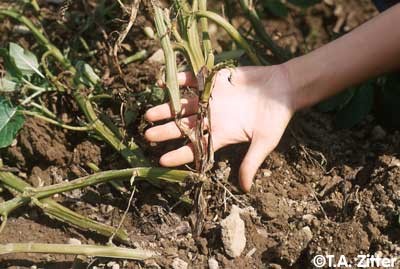

Insect Pest
Aphids (Aphidae)
Identification: Aphids are 2.5 mm long, oblong, squishy insects. Aphids come in both wingless and wing varieties. When they attack the crop in great numbers, especially the newest leaves and stems, direct harm happens.
Management
Cultural Control:
- Before planting fresh crop, remove old crop waste.
- Plant crops next to one another.
- Use nitrogen fertiliser sparingly.
- Cover the ground with a piece of grey plastic that reflects sunlight to deter aphids.
Chemical Control:
➢ Employ natural treatments to get rid of aphids, bifenthrin, and cypermethrin, such as neem oil or insecticidal soap.
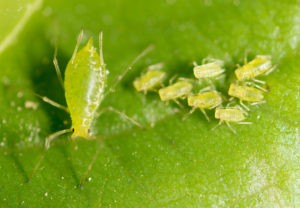

Whitefly (Bemisia tabaci)
Identification
The adult fly is 1-2 mm long and white in colour. It consumes the leaf sap, exactly like the larvae do. A large swarm of whiteflies may fly up when plant leaves are flipped around. On the underside of the leaves, they lay their eggs.
Management
Cultural Control
• Increase the presence of whitefly natural predators by interspersing bushes or other plants.
• In between crop rows (inter-planting) or along borders’ walkways.
· Employ resilient cultivars (hairy leaves make it difficult for the whitefly to lay its eggs).
Chemical control: Used systemic insecticide imidacloprid, Bifenthrin, acetamiprid · azadirachtin (Neem Oil)
